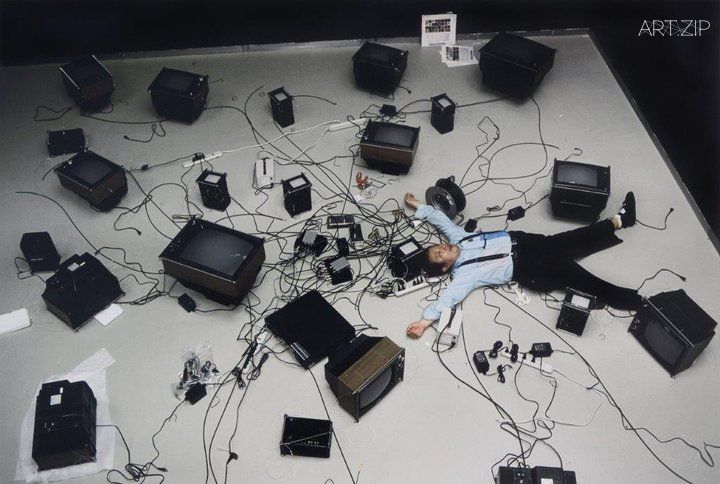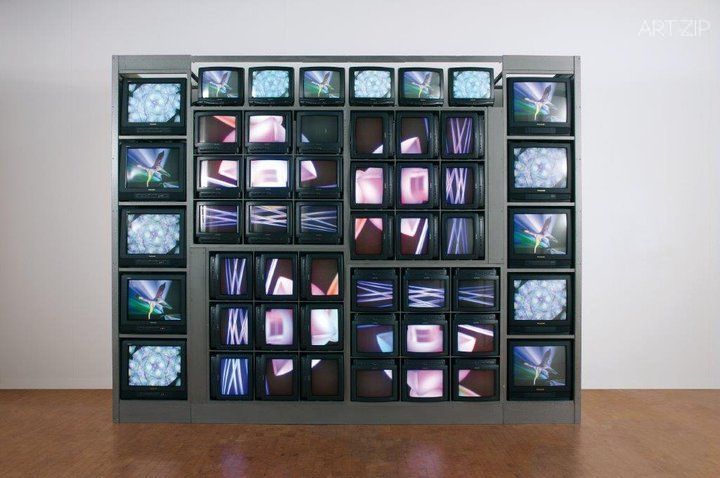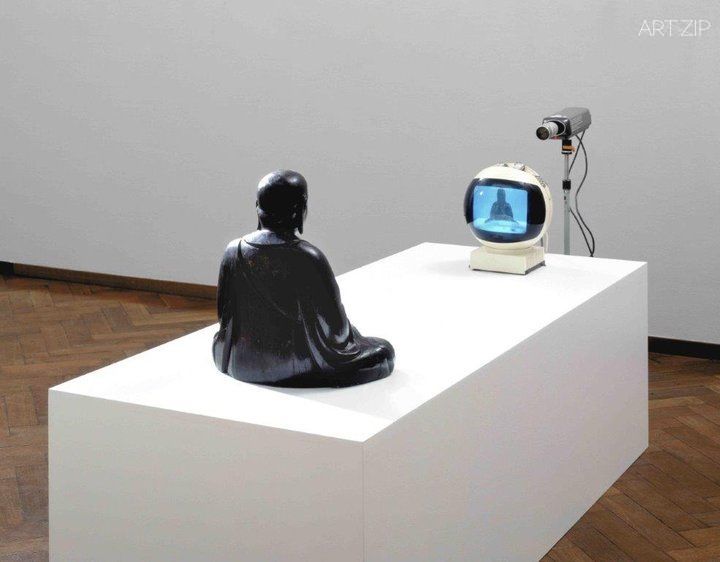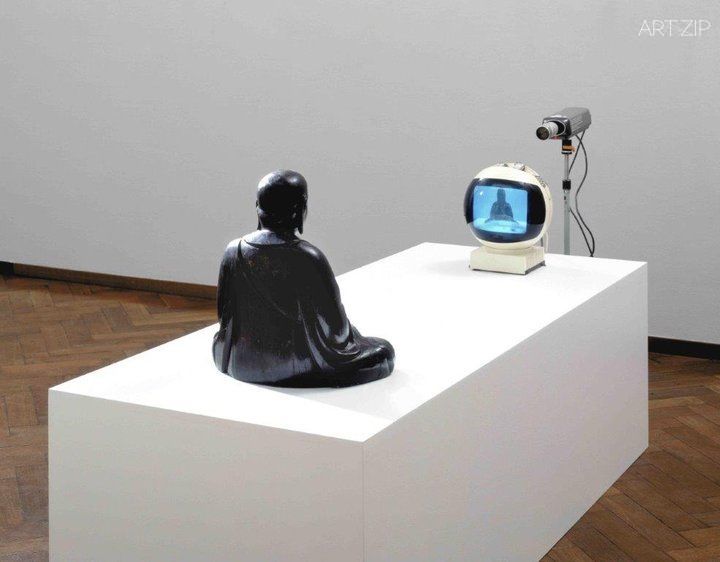
17 October 2019 – 9 February 2020
Tate Modern
The Eyal Ofer Galleries
This year, Tate Modern will present a major exhibition of the work of visionary Korean artist Nam June Paik. Renowned for his pioneering use of emerging technologies, Paik’s innovative yet playfully entertaining work remains an inspiration for artists, musicians and performers across the globe. Organised by Tate Modern and San Francisco Museum of Modern Art, this will be the most comprehensive survey of the artist’s work ever staged in the UK, bringing together over 200 works – from early compositions and performance to video and large-scale television installations, in a mesmerising riot of light and sound.
Nam June Paik (1932-2006) developed a collaborative and interdisciplinary practice that foresaw the importance of mass media and new technologies, coining the phrase ‘electronic superhighway’ to predict the future of communication in an internet age. He has become synonymous with the electronic image through a prodigious output of manipulated TV sets, live performances, global television broadcasts, single-channel videos, and video installations.
To introduce Paik’s radical world, Tate Modern will open the exhibition with TV Garden 1974/2002. The large-scale installation explores diminishing distinctions between the natural and technological, comprising dozens of television sets that appear to grow from within a garden of lush foliage. Paik’s first robot work Robot K-456 1964 will also be on display and a room will be dedicated to screening four of Paik’s ground-breaking satellite videos. Broadcast throughout the 1980s these ambitious works feature icons of popular culture including Peter Gabriel, Laurie Anderson, David Bowie and Lou Reed, defining the ‘MTV aesthetic’ of the era.
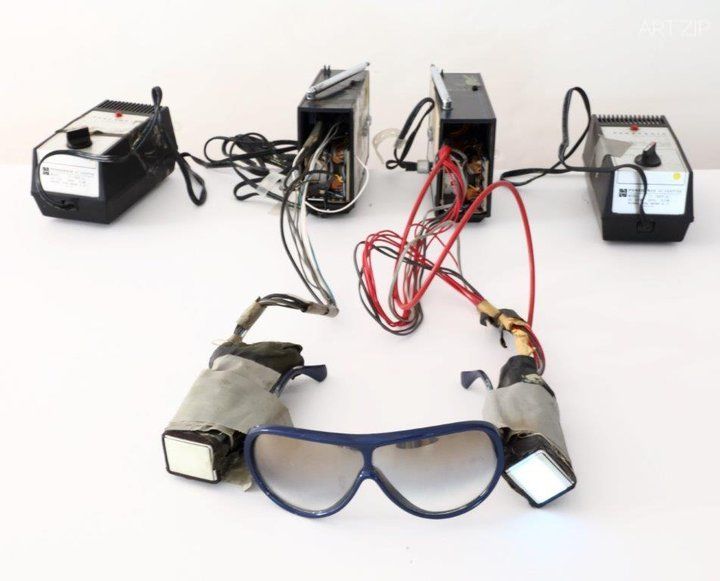
Nam June Paik Internet Dream 1994 ZKM _ Centre for Art and Media, Karlsruhe © The Estate of Nam June Paik
The artist also played a pivotal role in Fluxus, an international network of avant-garde artists, composers, designers and poets, through the cross-germination of radical aesthetics and experimentation. Born in South Korea, but living and working in Japan, Germany and the USA, he collaborated with a global community of artists at the cutting-edge of art practice. The show will highlight key creative partnerships with celebrated composer John Cage, choreographer Merce Cunningham and Joseph Beuys. Paik’s collaboration with cellist Charlotte Moorman was also a deeply significant one for both artists, who developed a repertoire of provocative performances incorporating Paik’s television sculptures within elaborate costumes and props. The exhibition will include TV Cello 1971 and TV Bra for Living Sculpture 1969, alongside videos and photography of their performances.
Tate Modern will partially restage Paik’s pivotal first solo exhibition, Exposition of Music – Electronic Television. Prepared pianos and musical instruments will be shown with examples of the artist’s earliest manipulated televisions and interventions into live broadcast. Further highlights will include seminal works that demonstrate the influence of Zen, Taoism and wider Buddhist philosophies in Paik’s approach to art and technology, including TV Buddha 1974 and One Candle 1989.
The exhibition will culminate with the dazzling installation Sistine Chapel 1993, recreated for the first time since he was awarded the Golden Lion for the German pavilion at the Venice Biennale over 25 years ago.
Nam June Paik is curated by Dr Sook-Kyung Lee, Senior Curator, International Art (Hyundai Tate Research Centre: Transnational), Tate, and Rudolf Frieling, Curator of Media Arts, San Francisco Museum of Modern Art, with Valentina Ravaglia (Tate) and Andrea Nitsche-Krupp (SFMOMA). The exhibition is organised by Tate Modern and San Francisco Museum of Modern Art and will tour to the San Francisco Museum of Modern Art as well as venues in the United States of America, the Netherlands and Singapore. The exhibition at Tate Modern will be accompanied by a catalogue from Tate Publishing and a programme of talks and events in the gallery.
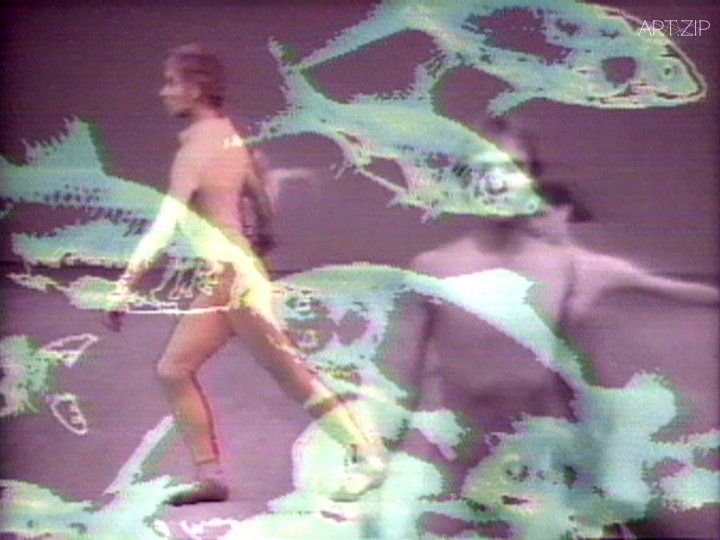
Nam June Paik Merce by Merce by Paik_ Part Two_ Merce and Marcel 1978 Courtsey of Electronic Arts Intermix (EAI), New York and the Estate of Nam June Paik © The Estate of Nam June Paik
2019年10月17日—-2020年2月9日
泰特現代美術館
白南準以運用彼時最前沿的科技作為藝術載體而聞名於世,時至今日,他充滿著趣味性的作品仍為全球範圍內的當代藝術家、音樂家、表演藝術家們提供靈感。此次,由泰特美術館與舊金山現代藝術美術館共同企劃的白南準大展,將成為英國境內有史以來覆蓋範圍最全面的回顧展。從早期的構圖巧思、行為藝術,到中期的影像及電視機裝置作品,至光影和聲音的混合創作,將有超過200件作品呈現於觀眾。
展覽由《電視公元1974/2002》開篇,這壹大型裝置作品模糊了自然與科技的邊界,大量的電視機仿佛自花園泥土中生長出來。白南準的第壹件機器人作品《機器人k-456 1964》也將在展覽中亮相,且有單獨的空間放映他的四件突破性的衛星影像作品。自1980年代以來,這些充滿野心的作品將焦點對準了定義“MTV美學”時代流行文化的偶像們,包括Peter Gabriel, Laurie Anderson, David Bowie和Lou Reed。
作為壹名擁有國際多元文化成長背景的前衛藝術家、作曲家、設計師和詩人,白南準在激浪派中擔任著舉足輕重的角色。在韓國出生,生活和工作在日本、德國與美國,他與世界範圍內的藝術家群體合作,創作出壹系列最尖端前衛的藝術作品。
《白南準》由現代-泰特研究中心的Sook Kyung Lee博士,舊金山現代藝術美術館多媒體藝術策展人Rudolf Frieling,及Valentina Ravaglia和Andrea Nitsche-Krupp策展。

